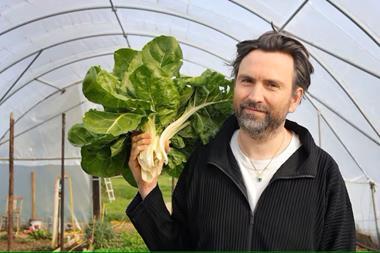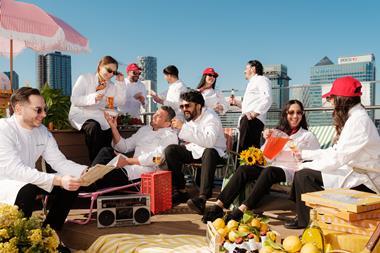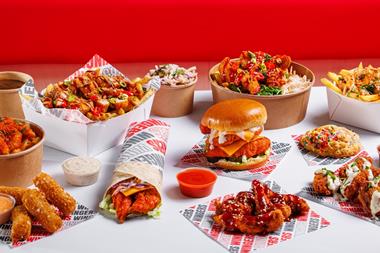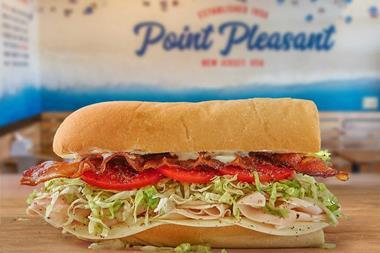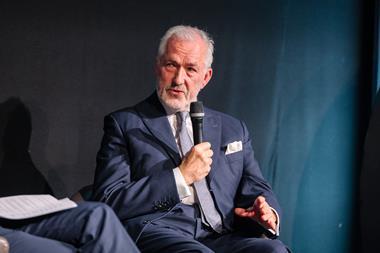Tom Ryan, founder of US better burger chain Smashburger, talks to M&C Report about the growing influence of the fast-casual movement, the brand’s launch and expansion plans in the UK, the fledgling UK better burger market and “playing total offence”.
The introduction into the country of Five Guys and Shake Shack over the last few years, not to mention the growth and launch of a plethora of UK-born brands, means the better burger segment is currently the most vibrant and competitive. So why does Smashburger think that now is a good time to come to the party?
“It was the same kind of question we had in the States in 2007/2008 when we were starting out,” says Tom Ryan, the brands founder. “People were saying ‘are you guys crazy why are you opening a burger concept, surely that is the last thing this country needs’. But there was a void, all of us in this category could see there was a space for great quality burgers, burgers with a good story and that you feel good about eating and can get passionate about.
“We all felt that there needed to be a change and it was all about finding your own way to express that for the market place and take our point of view forward to the next generation of consumers.”
For Ryan the focus has always been on what people will be eating in the next 30 years versus what they have been eating in the past 30. He says: “Let’s learn from the past but focus on the future. That has been our kind of mantra along the way of putting the concept together and evolving it. I think there is a lot of diversity in the sector, we have a very differentiated concept to what is already here. In time, customers will tell us who has the best equation. Diversity is the spice of the life.”
He says that the company, which currently has 315 sites, of which it operates over 200 itself, looks for three things when it comes to criteria for growing outside the US. “Places where there is a huge primary demand for beef and burgers, the UK is overqualified on that front. It is a great burger market.
“Secondly, there needs to be a robust economy. Then the third thing is finding smart capable and experienced partners who can hold the brand high and add to the mix a fundamental market-based understanding within and outside the four walls of the business. We have been waiting for that third part because we knew the UK was good on the first two.”
Ryan name checks Byron and GBK as to UK-based groups he believes are “doing a good job”. He says: “Those guys have their noses up in the air and smelling out that there is a need for somebody to really be creative for the next generation of consumers. The largest purveyors of burgers in the world have focused on value, convenience and speed more than what I believe are the more contemporary set of values of taste, integrity, authenticity and some aspect of culinary process that adds value, which is then wrapped around delivering a great experience.
“I think we are all in the game. I think we are all going to express that. The creative expression of that will all be different, as it should be. They are off to a good start and on the right path. Are they as insightful around an experience as we might be relative to the way we look at the market place and have a different worldview, I’m not so sure. I happen to think and this is not something negative against them, but I happen to think our insights are really strong. Our sense of understanding dynamics in the overall restaurant landscape are graphically obvious to us and all those elements are built in to our design criteria.
Ryan believes the brand is helping put “burgers back in people’s lives”. He says: “We are capturing burger appeal from above us, below us and sideways relative to the structure of the market. We have a lot of fast food feeders trading up for a couple more bucks, we have a lot of adult casual people trading down for equally good food, for half the cost and for a third of their time. Then we have other people in the fast-casual arena, which is clearly the way modern customers want to eat, coming back into the burger fold. It is the convergence of all those things.
“The lion share of growth in the US, net of a few interesting concepts, is coming from fast casual and it is coming at the expense of fast food and what I would call old school adult casual concepts. It is the new badge for the next generation. It is letting the modern consumers manage the three things that they care about most in making decisions – their time, their money and their experience. It is exactly the right balance of those three things. The growth of fast casual as a play is clear, each concept within that will have its own rate of adoption and own rate of competition based on primary demand.
“I do think the segment has reset consumer’s expectations, challenging the relevance of pre-existing big companies. There is one thing that is culturally common amongst fast casual concepts and that is they have food with a story, which makes you feel good about what you are eating. That is part of what makes fast-casual tick. If you are saying I am here and I am big then that is not what the next generation of customers is looking for.”
With McDonald’s clearly in mind, Ryan believes the tradition eating-out landscape is in transition. He says: “Transitional times can really stymie big companies that don’t quite know what to do because you can’t change or alienate your current consumer base to keep yourself alive. What we feel at Smashburger and it is the same I believe for concepts like us, is that we get to enjoy this new energy from the consumer without having to worrying about any past anchors and get to play total offense. I think that is a really high energy situation for these modern customers seeking bolder, more expressive and differently shaped food experiences.
As the group looks to grow in the UK, each area/town will have its own signature menu item. In all of the cities in the US, the brand designs a certain portion of the menu to cater to local favourites and tastes. For example as its enter into the UK market it will look to have conversations with local craft brewers.
Ryan adds: “We take a license to be non-formulaic. The core brand will be there but there is going to be this colour story around localising key things that resonate with a local ingredient and customer base. We think that brings more fun and high energy to the brand. It also brings banter on social media, keeps the chatter level high around the brand, consumers care about their local nuances. The whole craft beer movement is probably the most innovative segment of the F&B market around the world at the moment.
The initial expansion figure of 35 sites in the UK over the next few years is what the group sees in the “close horizon”. Ryan says: “We are in full agreement we want to go beyond that, but let’s not run before we can walk. I think we want to see what the nascent demand is in a myriad of trading areas. We built Smashburger to go wherever. 35 sites is the safest of bets, an under bet. To be a sage and say exactly what the scope and scale of the operation could be here is foolhardy. We want to pick people smart enough to know the difference between organic growth and smart organic growth. We will trade a slower rate of growth for high quality stores. It is all about building long-term value.”


























